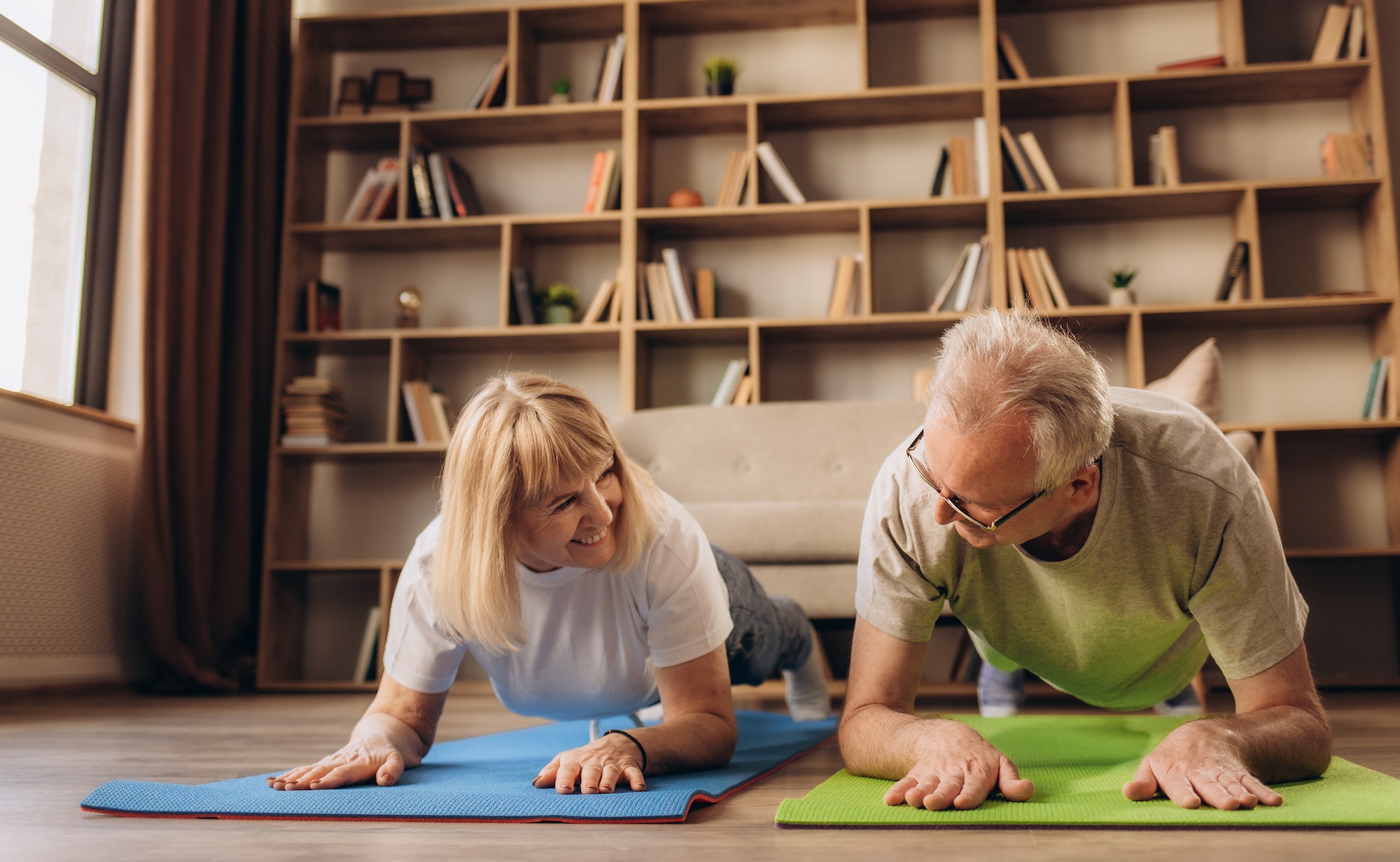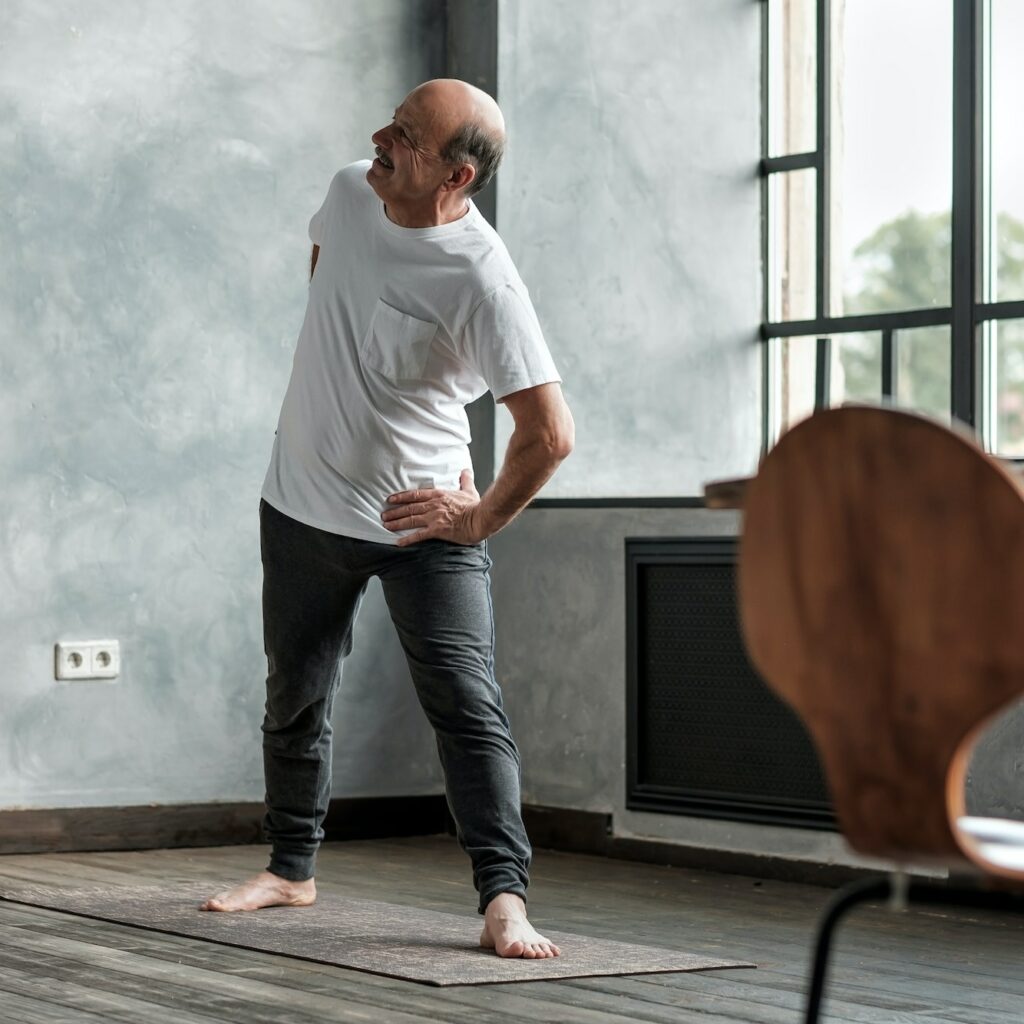
Yoga for Beginners: A Guide to Staying Healthy at Home
As we age, maintaining our health becomes increasingly important. One of the most effective ways to ensure physical and mental well-being in our golden years is by practicing yoga. Yoga has been widely recognized for its numerous health benefits, including improving flexibility, balance, and strength, as well as reducing stress and anxiety. In this blog post, we will explore the benefits of yoga for senior citizens, and provide a guide to starting a safe and effective yoga practice at home.
The Benefits of Yoga for Senior Citizens
- Improved Flexibility and Balance Yoga helps increase flexibility and balance by gently stretching the muscles and improving posture. This can be especially beneficial for seniors, as it may help to prevent falls and injuries.
- Enhanced Strength and Endurance Regular yoga practice can lead to increased muscle strength and endurance. Building strength in key areas, such as the core and legs, can contribute to overall stability and help seniors maintain their independence.
- Reduced Stress and Anxiety Yoga encourages mindfulness and deep breathing, which can help to reduce stress and anxiety. This is particularly important for seniors, who may be coping with significant life changes or health issues.
- Improved Mental Clarity and Focus Practicing yoga regularly can help to sharpen mental focus and improve cognitive function. This is especially beneficial for seniors, who may be facing age-related cognitive decline.
- Better Sleep Yoga can promote relaxation and improve sleep quality. Getting adequate sleep is vital for maintaining overall health and well-being, especially for seniors.

Tips for Starting a Yoga Practice at Home
- Consult with Your Doctor Before beginning any new exercise routine, it is important to consult with your doctor, particularly if you have any pre-existing health conditions or concerns.
- Choose the Right Yoga Style There are many different styles of yoga, each with varying levels of intensity and focus. Hatha yoga, for example, is a gentle and accessible style, perfect for beginners and seniors. Yin yoga is another excellent option, as it involves holding poses for longer periods, promoting deep stretching and relaxation.
- Find Online Resources Many online resources provide guided yoga classes, ranging from beginner to advanced levels. This can be a great way to get started and learn proper techniques from experienced instructors. Be sure to choose classes that are specifically designed for seniors or those with limited mobility.
- Create a Comfortable Space Set up a dedicated space in your home for your yoga practice, ensuring it is comfortable and free of distractions. You’ll need a yoga mat or a soft surface to practice on, as well as any props you might require, such as blocks or a strap.
- Begin Slowly and Listen to Your Body Start with short sessions and gradually increase the duration and intensity of your practice as you become more comfortable. Always listen to your body and modify poses as needed to avoid strain or injury.
- Incorporate Yoga into Your Daily Routine To maximize the benefits of your yoga practice, try to incorporate it into your daily routine. This can be as simple as dedicating 15 minutes each morning or evening to practicing a few poses.
Conclusion
Yoga offers a multitude of physical and mental health benefits for senior citizens, making it an ideal form of exercise to incorporate into a daily routine. By following the tips outlined in this guide, seniors can safely and effectively begin a yoga practice at home, leading to improved overall health and well-being. Namaste!



